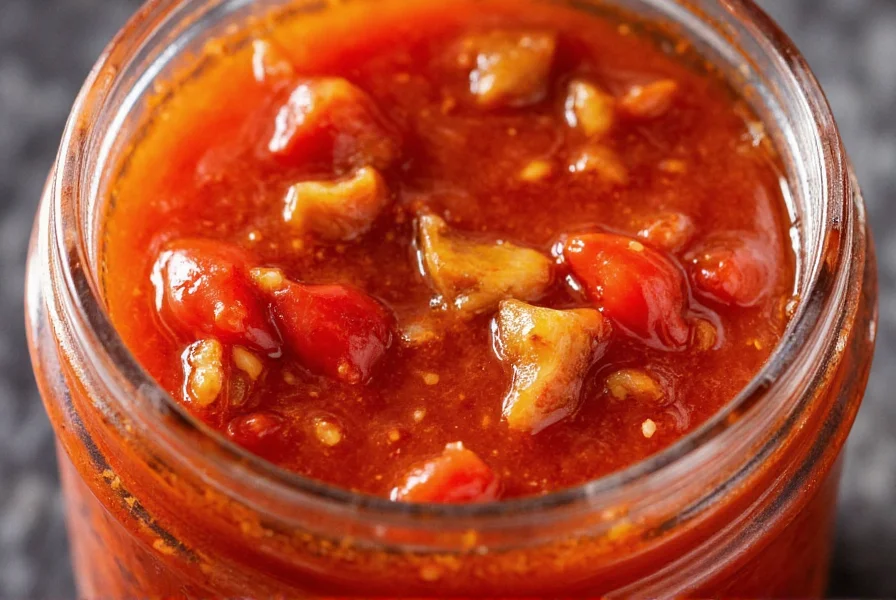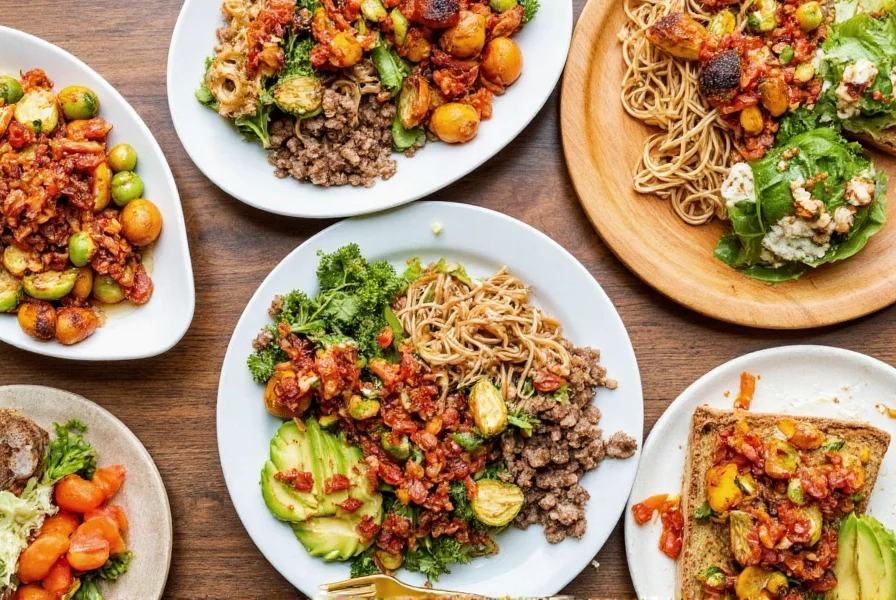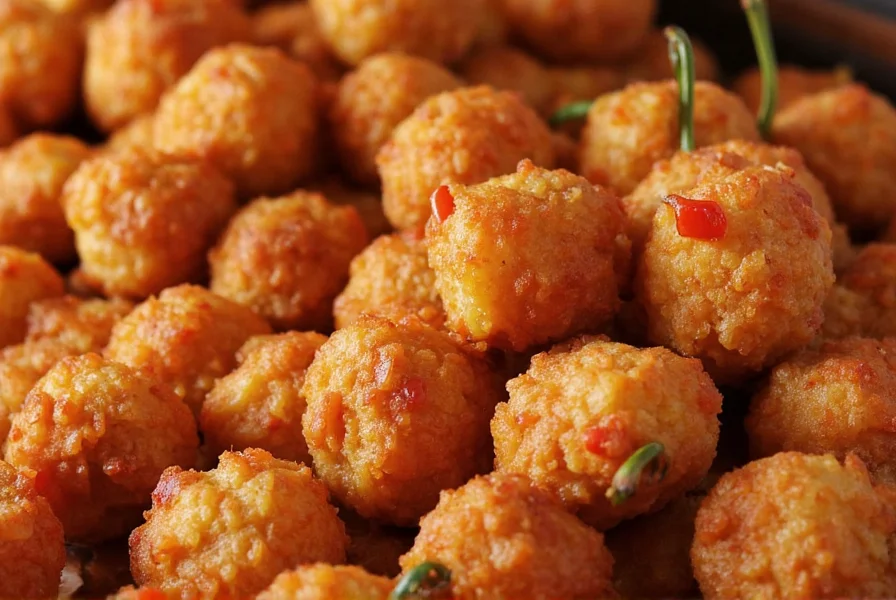Chili crunch is a popular Asian-inspired condiment made from fried garlic, shallots, and chili peppers suspended in oil with added seasonings like vinegar, sugar, and salt. Unlike smooth chili oils, it features crunchy bits that provide both texture and intense flavor, making it a versatile topping for noodles, rice, eggs, and more.
For food enthusiasts seeking to understand this culinary sensation, chili crunch represents more than just another hot sauce. This textured condiment has taken kitchens worldwide by storm, transforming ordinary meals with its complex flavor profile and satisfying crunch. Created through a careful process of frying aromatics and chilies to perfection, chili crunch delivers a multi-dimensional taste experience that combines heat, umami, sweetness, and aromatic depth in every spoonful.
The Origins of Chili Crunch
While chili-based condiments have existed in various Asian cuisines for centuries, the specific formulation known as "chili crunch" gained widespread popularity through the Lao Gan Ma brand from China. The term "chili crunch" itself emerged as Western consumers began distinguishing this textured variety from smoother chili oils. Traditional Chinese la jiao you (chili oil) often includes sediment, but modern commercial chili crunch products intentionally maximize the crunchy component as their signature feature.

Key Ingredients That Define Authentic Chili Crunch
The magic of chili crunch lies in its carefully balanced ingredients. While recipes vary by brand and region, authentic versions typically include:
- Dried red chilies - Provide the foundational heat and color
- Fresh garlic - Fried until golden for sweet, nutty notes
- Shallots or onions - Add sweetness and additional crunch
- Vegetable oil - Usually soybean or rapeseed oil as the base
- Vinegar - For brightness and preservation
- Sugar - Balances the heat
- Salt - Enhances overall flavor
- Sichuan peppercorns (optional) - For that distinctive tingling sensation
What separates true chili crunch from simpler chili oils is the substantial amount of fried aromatics that remain suspended in the oil rather than being strained out. These crispy morsels are the heart of the product's appeal.
Chili Crunch vs. Similar Condiments
Many people confuse chili crunch with other spicy condiments. Understanding these differences helps appreciate what makes chili crunch unique:
| Condiment | Texture | Primary Ingredients | Heat Level | Best Uses |
|---|---|---|---|---|
| Chili Crunch | Crunchy with visible bits | Fried garlic, shallots, chilies, oil | Moderate to high | Finishing topping, mixing into dishes |
| Chili Oil | Smooth, sometimes with sediment | Chilies infused in oil | Variable | Cooking base, dipping sauce |
| Sriracha | Smooth sauce | Chilies, garlic, vinegar, sugar | Moderate | Adding heat to dishes |
| Gochujang | Thick paste | Fermented chilies, glutinous rice | Mild to moderate | Marinades, stews, sauces |
How to Use Chili Crunch in Your Cooking
The versatility of chili crunch makes it one of the most valuable condiments to keep in your pantry. Professional chefs and home cooks alike appreciate its ability to elevate simple dishes with minimal effort. Here are some popular applications:
- As a finishing touch - A spoonful added just before serving enhances flavor and texture
- Mixed into noodles - Toss with ramen, udon, or rice noodles for instant flavor boost
- With eggs - Perfect with scrambled eggs, fried eggs, or omelets
- On proteins - Adds dimension to grilled chicken, fish, or tofu
- In dressings and dips - Mix with mayo, yogurt, or vinegar for custom sauces
- With vegetables - Toss with roasted or steamed vegetables
- On pizza - An unexpected but delicious topping alternative

Storage and Shelf Life Considerations
Proper storage ensures your chili crunch maintains optimal flavor and texture. Commercial products typically contain preservatives that extend shelf life, while homemade versions require more careful handling:
- Store in a cool, dark place away from direct sunlight
- Keep the container tightly sealed when not in use
- Use clean, dry utensils to prevent contamination
- Commercial products generally last 1-2 years unopened, 6-12 months after opening
- Homemade versions should be refrigerated and used within 1-2 months
- Separation of oil is normal - simply stir before using
Signs that chili crunch has spoiled include mold growth, off odors, or significant changes in color or texture. When in doubt, it's best to discard the product.
Creating Your Own Homemade Chili Crunch
While commercial options are widely available, making chili crunch at home allows for complete customization of flavors and heat levels. The basic process involves:
- Finely chopping dried chilies, garlic, and shallots
- Gently frying the ingredients in oil at controlled temperatures
- Adding seasonings like vinegar, sugar, and salt
- Allowing the mixture to cool and flavors to meld
- Transferring to clean, sterilized jars for storage
Home preparation lets you adjust ingredients to suit dietary preferences or restrictions, such as creating gluten-free, vegan, or lower-sodium versions. Many enthusiasts enjoy experimenting with additional ingredients like toasted sesame seeds, different chili varieties, or even umami boosters like dried shrimp or mushrooms.
Frequently Asked Questions
What's the difference between chili crunch and chili oil?
Chili crunch contains substantial amounts of fried garlic, shallots, and chili bits that provide texture, while traditional chili oil is primarily infused oil with fewer or no solid components. Chili crunch is meant to be used as a topping that adds both flavor and crunch, whereas chili oil serves more as a cooking ingredient or smooth condiment.
Is chili crunch spicy hot?
Chili crunch typically offers moderate heat that varies by brand and recipe. It provides noticeable warmth without overwhelming spiciness for most palates. The heat level comes primarily from the dried chilies used, but the fried garlic and shallots help balance the sensation. Many varieties offer mild, medium, and hot options to suit different preferences.
Can I make chili crunch without deep frying?
Yes, you can create a version of chili crunch using oven-toasted ingredients instead of deep frying. While the texture and flavor profile won't be identical to traditionally fried versions, you can achieve satisfying results by carefully toasting the garlic, shallots, and chilies in the oven at low temperatures before mixing with heated oil and seasonings.
Does chili crunch need to be refrigerated after opening?
Most commercial chili crunch products don't require refrigeration after opening due to their high oil content and preservatives, but refrigeration can extend freshness. Homemade versions should be refrigerated and typically last 1-2 months. Always check the specific product instructions, and when in doubt, refrigerate to maintain optimal quality.
What are the best dishes to pair with chili crunch?
Chili crunch complements a wide variety of dishes including noodles (especially ramen), rice bowls, eggs, roasted vegetables, grilled meats, avocado toast, and even pizza. Its versatility makes it suitable for Asian-inspired dishes as well as Western favorites, adding both flavor complexity and textural interest to nearly any savory meal.











 浙公网安备
33010002000092号
浙公网安备
33010002000092号 浙B2-20120091-4
浙B2-20120091-4